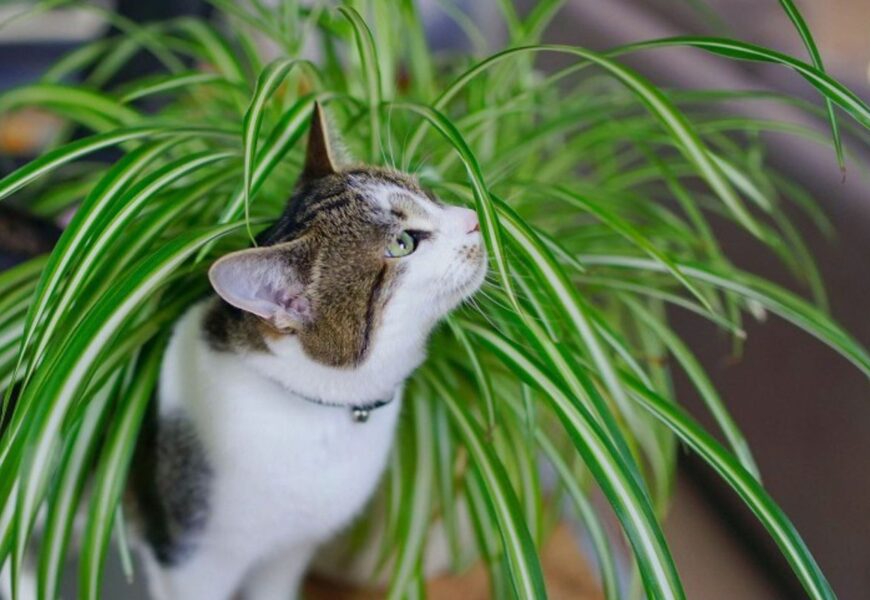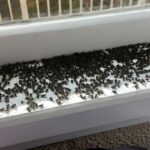Introduction to Spider Plants: What You Need to Know
Spider plants are a popular choice for indoor gardening due to their attractive appearance and low-maintenance nature. These plants are known for their long, arching green leaves and their ability to purify the air, making them a perfect addition to any home. However, pet owners may have concerns about the safety of keeping plants around their furry friends. Specifically, many wonder if spider plants are safe for cats, especially considering their natural curiosity and tendency to chew on greenery. In this guide, we’ll explore how to keep spider plants safe for cats and offer helpful tips for ensuring a pet-friendly home while enjoying the beauty of these plants.
Are Spider Plants Toxic to Cats and Dogs?
Spider plants are non-toxic to both cats and dogs, which makes them a safe option for households with pets. While they aren’t dangerous, eating too many leaves could lead to mild gastrointestinal upset in some pets. Despite being non-toxic, it’s important to monitor your pets’ interactions with these plants to prevent overconsumption.
- Mild Effects of Ingestion
Pets who ingest spider plants may experience slight stomach discomfort, which can include vomiting or diarrhea. These effects are typically short-lived and do not pose a serious health risk.
Understanding Spider Plant Safety for Pets
Even though spider plants are not toxic, their appeal to pets—especially cats—is something to consider. Cats, in particular, are attracted to the plant’s long, grassy leaves. By understanding how to safely keep spider plants, pet owners can maintain a balance between having a beautiful home garden and ensuring their pets’ safety.
- Why Pets Love Spider Plants
The plant’s texture and the movement of its leaves often captivate pets, especially cats. This attraction is natural, as cats enjoy chewing on plants that resemble grass, providing them a sense of playfulness and stimulation.
Why Are Cats Drawn to Spider Plants?
Cats are naturally curious, and spider plants often pique their interest due to the plant’s texture and movement. The long, dangling leaves mimic the look of grass, which might appeal to a cat’s instincts to chew or play with foliage. This attraction is especially common with younger or more active cats.
- Cats and Plant Attraction
The leaves of the spider plant move gently, which could stimulate a cat’s playful instincts. For some cats, the sensation of chewing on the leaves is a form of entertainment.
The Effects of Spider Plant Consumption in Cats
When cats chew on spider plants, they may experience mild hallucinogenic effects due to the saponins found in the leaves. While not toxic, these compounds can make a cat act unusually, often causing hyperactive behavior, mild vomiting, or drooling. Fortunately, the effects are temporary and do not cause lasting harm. It’s important to note that while spider plants safe for cats, moderation is key.
- Symptoms to Look For
If your cat chews on a spider plant, watch for signs like drooling, vomiting, or restlessness. These symptoms are typically short-term and should resolve without medical intervention.
What Happens if My Dog Eats a Spider Plant?
Dogs that consume spider plants may experience mild digestive upset, including symptoms like vomiting or diarrhea. While the plant isn’t dangerous, it’s still important to prevent your dog from eating too much, as this could cause discomfort. Typically, dogs won’t show serious health concerns from spider plant consumption.
- Signs of a Reaction in Dogs
If your dog eats spider plant leaves, they may show signs like lethargy, stomach upset, or mild vomiting. These symptoms are generally not severe and will pass once the plant matter is digested.
Is Spider Plant Poisonous to Humans?
Spider plants are completely safe for humans, even for young children. There are no known toxic properties in the plant, so there’s no need to worry about accidental ingestion. As long as you don’t consume large quantities, humans can interact with spider plants safely without any health risks.
How to Safely Keep Spider Plants Around Pets
If you want to have spider plants in your home while keeping your pets safe, there are a few precautions you can take. Placing your spider plants in areas that are out of reach of curious pets, such as high shelves or hanging baskets, will help prevent your pets from chewing on them. Regularly pruning damaged leaves also ensures your plant remains healthy.
- Best Placement for Pet Safety
Consider placing your spider plant in a location that’s hard for your pets to access. For example, placing plants in hanging pots or on high, inaccessible shelves will keep them out of your pets’ reach.
Pet-Friendly Gardening: How to Create a Safe Indoor Space
To maintain a pet-safe environment, choose plants that are safe for pets and avoid any known toxic varieties. Spider plants are a good option, but also ensure your home is free of harmful plants. Be mindful of where you place your plants to minimize your pet’s temptation to chew on them. If you’re looking for a pet-friendly plant, spider plants safe for cats can be a great addition to your indoor space.
- Choose Pet-Safe Plants
Opt for plants that are safe for your pets. If you’re unsure, research the toxicity of plants before bringing them into your home. Spider plants are an excellent choice for households with pets.
Common Signs of Plant Poisoning in Pets
Even though spider plants are generally safe, it’s important to recognize signs of plant poisoning. Some symptoms of plant poisoning in pets include vomiting, diarrhea, drooling, and lethargy. If you observe these signs and suspect that your pet has ingested a toxic plant, contact your veterinarian immediately for advice.
- Signs to Watch For
If your pet begins to exhibit abnormal behaviors after chewing on a plant, such as vomiting or diarrhea, take action by removing the plant and contacting your vet for guidance.
Practical Tips to Prevent Pets from Eating Spider Plants
Keeping spider plants away from your pets requires creativity. One simple solution is to place your plants in hanging baskets or on high shelves where your pets can’t reach them. Additionally, using physical barriers like pet-safe plant cages or netting can also prevent your pets from accessing the plant.
- Use Physical Barriers
To prevent your pet from eating spider plants, consider using protective barriers. Plant stands, hanging baskets, or elevated shelves can effectively keep your plants out of your pet’s reach.
Alternatives to Spider Plants for Pet Owners
If you find that your pets are too interested in spider plants, you might consider replacing them with other non-toxic houseplants. Some pets may have a particular attraction to spider plants, so offering alternative plants can help keep their attention elsewhere.
- Non-Toxic Alternatives
Pet-friendly alternatives to spider plants include varieties like Boston ferns, cast iron plants, and areca palms. These plants offer similar benefits and are safe for pets.
Also, read: White Pothos – Variegation of Magical Beauty
How to Create a Pet-Safe Garden with Spider Plants
If you want to include spider plants in your garden, ensure that they are placed in pet-safe areas. Create a garden layout that keeps pets away from plants by using fences or elevated planters. This will help prevent your pets from chewing on or ingesting harmful plants.
- Garden Layout Tips
Design your garden layout to prevent pets from accessing plants. Raised planters or hanging baskets are a great way to keep your spider plants safe from curious pets.
Spider Plant Care for Pet-Friendly Homes
Maintaining spider plants in a pet-friendly home requires attention to their needs while ensuring pets’ safety. Proper care includes regular watering, proper lighting, and occasional pruning of damaged or dead leaves. Ensuring your plants are healthy will reduce the chance of them attracting pets.
- Basic Care Tips
Water your spider plant only when the soil is dry, and ensure it’s placed in bright but indirect light. Regularly check for pests or damage and trim any affected leaves to keep the plant thriving and safe for your pets.
Keeping Your Pets and Spider Plants Safe Together
Spider plants are generally safe for cats and dogs, but it’s important to take precautions to ensure your pets don’t chew on them excessively. With proper placement and care, you can enjoy the benefits of spider plants in a pet-friendly home while ensuring the safety of your furry friends.
- Balanced Approach to Pet and Plant Care
By creating a balanced environment where both your spider plants and pets coexist safely, you can enjoy a healthy and harmonious home.
Conclusion:
Spider plants are an excellent choice for pet owners who want to enjoy the beauty of indoor greenery without compromising their pets’ safety. While these plants are non-toxic to both cats and dogs, it’s still important to manage their interaction with your pets to avoid any mild gastrointestinal issues. By placing your spider plants in safe, hard-to-reach areas and providing alternatives to satisfy your pets’ curiosity, you can create a harmonious living environment. With the right precautions, you can ensure that your home remains both pet-friendly and full of thriving greenery. Overall, when properly cared for and managed, spider plants safe for cats can be a delightful addition to your indoor garden.















